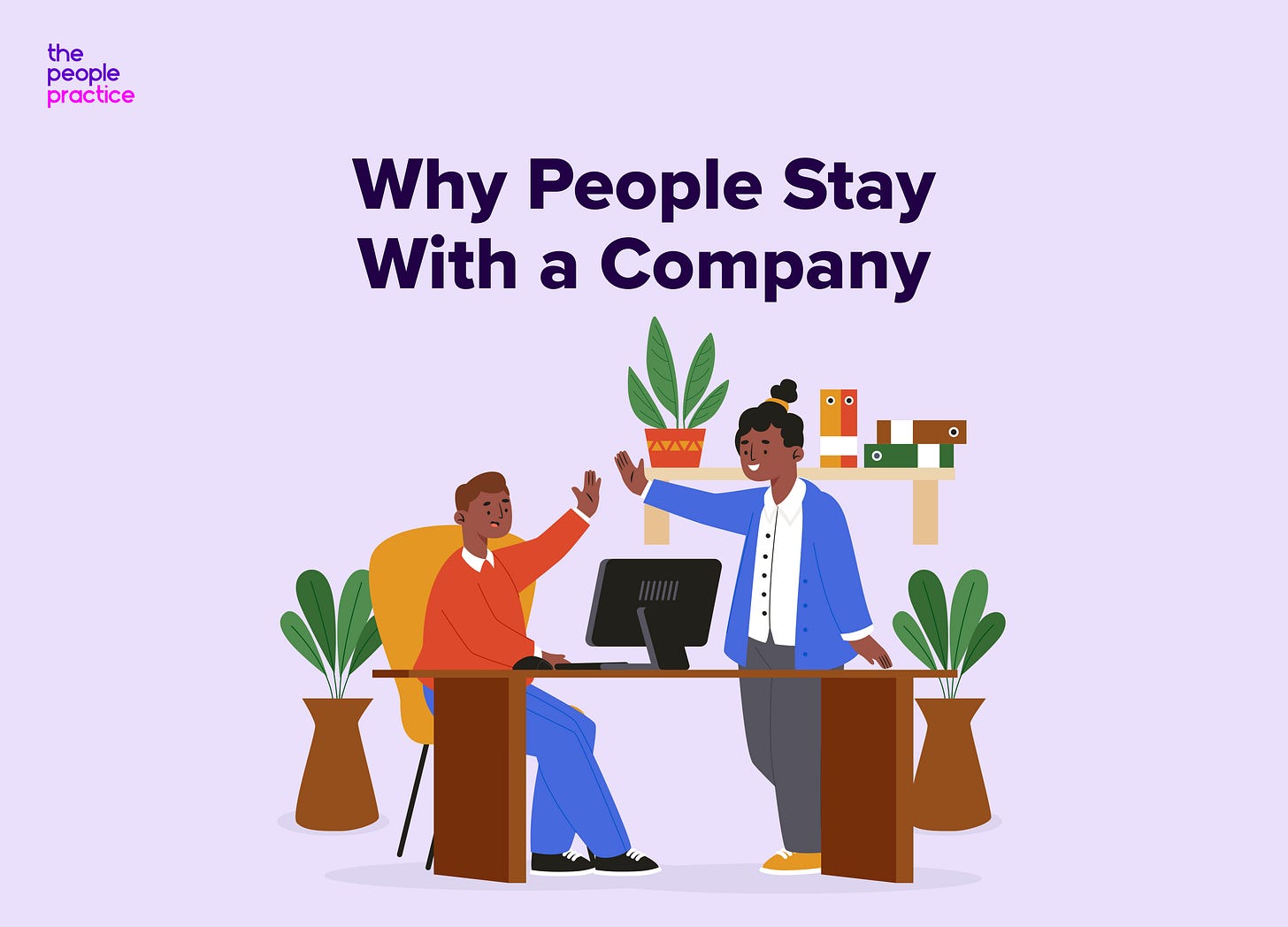Hello! Welcome to May’s edition of Your Workplace Culture Guide.
This month, we are identifying factors that really make people stay at work, beyond the surface-level perks. We cannot ignore the fact that everyone loves a good perk, they are fun, they boost morale and are attention grabbing during recruitment, but they rarely hold power when it comes to long-term retention. Today’s workforce is more intentional, more vocal, and more value-driven. So, what really makes people stay?
The short answer? Experience. Connection. Purpose. Growth.
The long answer? Keep reading…
In conversations about culture, we often hear phrases like “make work fun,” “bring your whole self to work,” or “offer cool benefits.” But when people leave companies, exit interviews provide deeper and more emotional reasons. They often say things like “I didn’t feel seen,” “I had no support,” or “I felt stuck.” This gap between surface-level perks and core human needs is where many organizations lose their people.
Let’s start with one of the most overlooked motivators: recognition. A thank you may seem small, but when people feel invisible for too long, disengagement sets in. Recognition, when done right, builds loyalty and creates a feedback loop where effort and impact are acknowledged and reinforced.
Right alongside recognition is the role of feedback. Not just a once-a-year performance review, but continuous, clear, and constructive conversations that help people grow. When they don’t get feedback, they don’t assume they’re doing well, they assume they’re being ignored. That silence can be more damaging than criticism.
Next comes psychological safety. Employees are more likely to stay in environments where they feel safe to speak up, make mistakes, and challenge ideas without fear of backlash. This kind of culture doesn’t happen by accident, it’s built intentionally, often modeled by leadership, and reinforced by everyday team dynamics.
Speaking of leadership, managers play a pivotal role in retention. A supportive, emotionally intelligent manager can make the difference between a team that thrives and a team that quietly burns out. Leadership that listens, adapts, and advocates creates a sense of belonging that’s hard to walk away from.
We also can’t ignore the demand for flexibility. Employees now seek more autonomy over how, when, and where they work. Flexibility doesn’t mean a lack of structure, it means organizations understand that productivity doesn’t look the same for everyone.
People want growth. If it’s a new role, a challenging project, or simply the chance to upskill, employees stay where they feel their potential is being invested in. If someone can’t see a future with your company, they’ll start looking elsewhere, even if the present seems comfortable.
So yes, perks can create a nice first impression. But people stay for much more.
To summarize, if you're a leader trying to build a culture that retains top talent, check out our leadership training offerings that’ll teach you how to focus more on:
Real recognition and feedback
Psychological safety
Trust-based flexibility
Human-centered leadership
Visible growth paths
Because what makes people stay isn’t what you give them but how you make them feel.
As always, here are our current job openings:





Thanks for the clearly written perspective here. I appreciate the emotional savvy in the line about it's not what you give but how you make people feel that matters. (The two might not, in a high-functioning org be all that far apart...)